St. Philip's Episcopal Church
Introduction
Text-to-speech Audio
St. Philip's Episcopal Church congregation first organized during the late-1860s, seeking to construct an Episcopal church for the Charles Town community. By 1887, the church was completed. Shortly thereafter, St. Philip's provided three different schools that served the congregation and community: St. Philip's Parochial Industrial School, St. Philip’s Academy, and St. Philip’s Sewing School. Unfortunately, the school struggled during the Great Depression and closed as a result. St. Philip’s also served as an emergency hospital for African Americans during the 1918 Influenza epidemic, during which hundreds of Blacks and whites died from the highly contagious virus disease.
Images
undated photo of congregation at St. Philips Sunday School
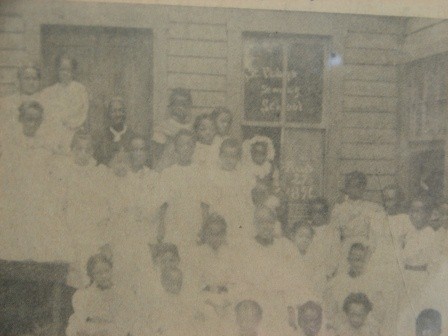
Band from Episcopal church, undated, marching town Main St.
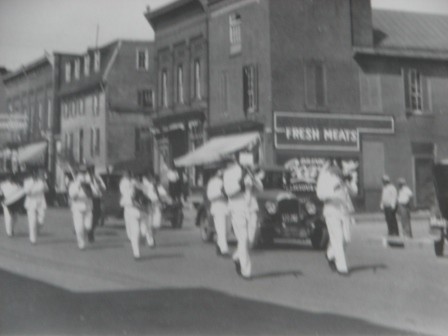
undated photo of family in front of St. Philips. Courtesy of JCBHPS

undated Black and white photo of St. Philips. Courtesy of JCBHPS
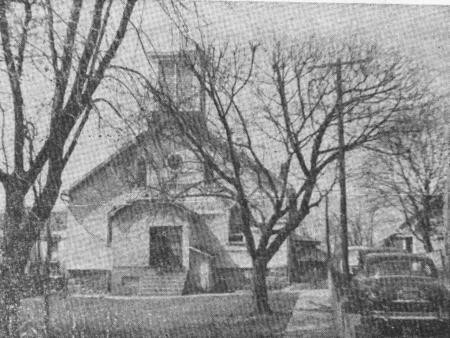
1965 graduation ceremony at St. Philips Parish Hall. Courtesy of JCBHPS
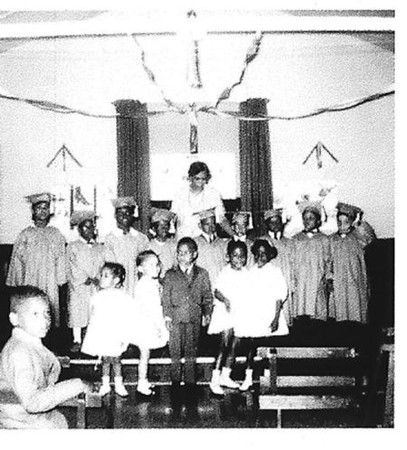
Early 1900s photo of St. Philips Sunday school class. Courtesy of JCBHPS
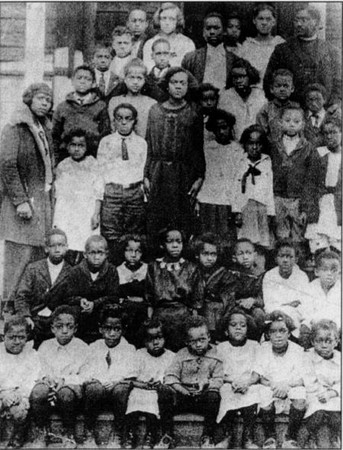
St. Philips today. Courtesy of JCBHPS
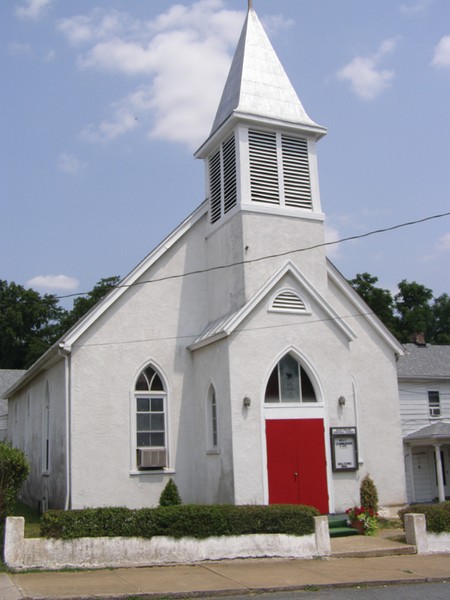
Backstory and Context
Text-to-speech Audio
From Zion Episcopal Church of Charles Town, WV. Partner to St. Philips.
"When the first West Virginia legislature met in 1863, it agreed to educate ‘‘free colored children,’’ but the proposition was left unfunded. With the condition that white and Black children should not be taught in the same schools, West Virginia’s second constitution in 1872 affirmed the state’s commitment to the education of African-American children. Although most school boards cooperated, court action sometimes had to be undertaken or threatened to force some to provide the needed support for Black education. Among the major difficulties was the dearth of teachers. In the beginning, whites served, as did Black teachers from neighboring states, particularly Ohio. The first formal effort to train Black teachers in West Virginia came at Storer College in Harpers Ferry. The college was begun in 1865 by the Freewill Baptist Church. In 1881 the state agreed to contract with Storer to train African-American teachers. Until the state’s Black land grant college, West Virginia Colored Institute (now West Virginia State University), was founded in 1891, Storer College was the only institution in the state preparing Blacks for the teaching profession. Later, Bluefield Colored Institute (now Bluefield State College), established in 1895, joined the other two in this mission. These institutions also provided secondary education In addition to Black public education, several private educational efforts were attempted. Storer College continued in Harpers Ferry until 1956; St. Phillips Academy was operated for a time by St. Phillips Episcopal Church in Charles Town; the Baptist State Association operated a school at Hilltop in Fayette County; and Catholics operated St. Peter Claver in Huntington. In 1919 the state created the position of state supervisor of Negro schools and appointed a Negro Board of Education. In 1933 assistant superintendents of Negro education were appointed in counties having 50 or more Black teachers. In addition to the push for more voice in the operation of their schools, Blacks also struggled for adequate buildings and materials, for equal salaries for teachers, and for a full nine-month school year."
Following the state's creation in 1863, the newly established state of West Virginia allowed for 'colored places of worship.' The original St. Philip's congregation first met during the late-1860s to formally organize and build a local Episcopalian church to serve the Charles Town area. By 1876, the congregation secured $200 for the purpose of constructing a house of worship; and in 1887, the church was finally completed. Bushrod Washington was the church's first superintendent and led the first service while the church was being constructed by holding the service in the second floor of the town hall.
St. Philip's offered three different schools that served the congregation and community: St. Philip's Parochial Industrial School, St. Philip’s Academy, and St. Philip’s Sewing School. Young women were trained in the sewing school started by Mrs. William Craighill of Zion Episcopal Church in 1875. In 1900, St. Philip’s Parochial and Industrial School started in the Parish Hall under the leadership of St. Philip’s Church minister and principal Rev. John Deaver, and teachers Mrs. Sarah D. Tolbert and Mrs. J. N. Deaver. The church newsletter was printed by the school. The St. Philip’s Day School, or Academy as it was sometimes called, organized during the 1920s and 1930s by Rev. Joseph H. Hudson. Teachers Miss Nethersole Ross and Miss Marion Ridgley taught such subjects as reading, writing, arithmetic, spelling, and printing. Weekly tuition fees of $.25 to $.45 financed the school. Unfortunately, the school struggled during the Great Depression and closed as a result.
St. Philip’s also served as an emergency hospital for African Americans during the 1918 Influenza epidemic, during which hundreds of Blacks and whites died from the highly contagious virus disease.
"When the first West Virginia legislature met in 1863, it agreed to educate ‘‘free colored children,’’ but the proposition was left unfunded. With the condition that white and Black children should not be taught in the same schools, West Virginia’s second constitution in 1872 affirmed the state’s commitment to the education of African-American children. Although most school boards cooperated, court action sometimes had to be undertaken or threatened to force some to provide the needed support for Black education. Among the major difficulties was the dearth of teachers. In the beginning, whites served, as did Black teachers from neighboring states, particularly Ohio. The first formal effort to train Black teachers in West Virginia came at Storer College in Harpers Ferry. The college was begun in 1865 by the Freewill Baptist Church. In 1881 the state agreed to contract with Storer to train African-American teachers. Until the state’s Black land grant college, West Virginia Colored Institute (now West Virginia State University), was founded in 1891, Storer College was the only institution in the state preparing Blacks for the teaching profession. Later, Bluefield Colored Institute (now Bluefield State College), established in 1895, joined the other two in this mission. These institutions also provided secondary education In addition to Black public education, several private educational efforts were attempted. Storer College continued in Harpers Ferry until 1956; St. Phillips Academy was operated for a time by St. Phillips Episcopal Church in Charles Town; the Baptist State Association operated a school at Hilltop in Fayette County; and Catholics operated St. Peter Claver in Huntington. In 1919 the state created the position of state supervisor of Negro schools and appointed a Negro Board of Education. In 1933 assistant superintendents of Negro education were appointed in counties having 50 or more Black teachers. In addition to the push for more voice in the operation of their schools, Blacks also struggled for adequate buildings and materials, for equal salaries for teachers, and for a full nine-month school year."
Following the state's creation in 1863, the newly established state of West Virginia allowed for 'colored places of worship.' The original St. Philip's congregation first met during the late-1860s to formally organize and build a local Episcopalian church to serve the Charles Town area. By 1876, the congregation secured $200 for the purpose of constructing a house of worship; and in 1887, the church was finally completed. Bushrod Washington was the church's first superintendent and led the first service while the church was being constructed by holding the service in the second floor of the town hall.
St. Philip's offered three different schools that served the congregation and community: St. Philip's Parochial Industrial School, St. Philip’s Academy, and St. Philip’s Sewing School. Young women were trained in the sewing school started by Mrs. William Craighill of Zion Episcopal Church in 1875. In 1900, St. Philip’s Parochial and Industrial School started in the Parish Hall under the leadership of St. Philip’s Church minister and principal Rev. John Deaver, and teachers Mrs. Sarah D. Tolbert and Mrs. J. N. Deaver. The church newsletter was printed by the school. The St. Philip’s Day School, or Academy as it was sometimes called, organized during the 1920s and 1930s by Rev. Joseph H. Hudson. Teachers Miss Nethersole Ross and Miss Marion Ridgley taught such subjects as reading, writing, arithmetic, spelling, and printing. Weekly tuition fees of $.25 to $.45 financed the school. Unfortunately, the school struggled during the Great Depression and closed as a result.
St. Philip’s also served as an emergency hospital for African Americans during the 1918 Influenza epidemic, during which hundreds of Blacks and whites died from the highly contagious virus disease.
Sources
African-American Heritage Trail of WV. West Virginia Division of Tourism. www.callwva.com.
